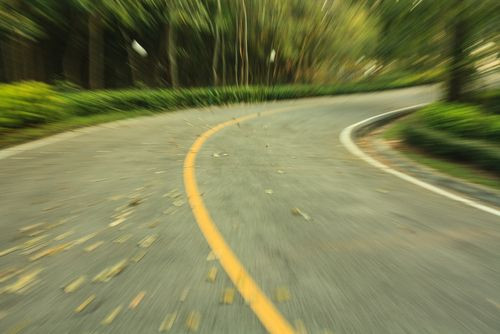Driving With A Hangover Just As Dangerous As Drunk Driving, With Equal Fatigue, Slow Reaction Times

For people who spend a wild night partying, waiting to drive home the following morning — rather than getting behind the wheel, still intoxicated — may seem like the safer option. But new research suggests people who drive with a hangover pose just as much of a threat to themselves and other motorists as those engaging in drunk driving.
Two complementary studies confer the same hazard of hangovers: the cumulative fatigue and poor sleep accrued after a night of intense libation makes for drivers that respond more slowly to environmental changes — switching lanes more erratically and generally demonstrating poor reasoning skills. Researchers from Utrecht University and the University of the West of England put subjects through simulated driving tests in order to gauge their impairment.
In the larger study performed by Utrecht University experimenters, people underwent a series of highway-like driving tests after having consumed an average of 10 drinks the night before. No alcohol was in any of the participants’ bloodstream at the time of testing. Despite this, however, subjects showed increased weaving and inability to maintain attention of the road at the same rate as someone with 50 milligrams of alcohol in their blood per 100 milliliters — a blood alcohol content, or BAC, of 0.05, which is the legal limit in Australia.
The findings cement hungover driving as a flaw in responsible decision making, and not law breaking, as drunk driving is currently the only recognized offense. Given these findings, perhaps there is salience to such a crime, although measuring the impairment itself poses a great challenge.
"We have a law that's based on blood alcohol concentration. There's no real way of measuring how hungover someone is. So we're a bit limited in what we can do," Dr. Mark King, senior researcher at the Center for Accident Research and Road Safety at the Queensland University of Technology, told Drive. And despite the evidence existing since the 1980s that drunkenness isn’t the only hazardous state, King added that "all we can really do is provide advice to people, and say your driving could be affected just as badly as if you were under the influence of alcohol as when you're hungover.”
The other study yielded the same results but with a different approach. Instead of a smooth high-speed commute, subjects were made to simulate stop-and-go traffic. Led by associate professor Chris Alford, the study saw people frequently committing simple driving errors, demonstrating slow reaction times, and unsafely increasing and decreasing speeds (a hallmark of poor reaction time).
“This was a naturalistic design of study, aiming to better reflect what happens in real life when people go to work the next day after drinking,” Alford told the Daily Mail. “This simulation represented a situation many people can relate to. They may already be aware of not driving home after a night out drinking, but we also need to advise them to plan for the next day so they won't be driving to work impaired.”
The effect stems from a range of influences, most notably the brain’s growing adaptation to alcohol while the drug is being consumed. “In the short term, that adaptation may contribute to any impairments after the alcohol is gone,” explained Dr. Steven Siegel, associate professor of psychiatry and director of the Translational Neuroscience Program in the School of Medicine at the University of Pennsylvania. “For example, when someone drinks heavily for an extended period, they become dependent on the presence of alcohol to be in balance (homeostasis). For those individuals, the absence of alcohol leads to an abnormal imbalance, which leads to withdrawal symptoms that can be fatal if not treated.”
Effectively, the hangover is the short-term withdrawal from alcohol. Combined with intense dehydration and minor sleep deprivation, in both quantity and quality of hours slept, the morning after has danger nearly written into it. But whether the dangers are unique to hangovers, rather than the combination of factors produced by excessive drug consumption, of any kind, is probably less likely.
As Siegel pointed out, “in many cases it is the adaptation, not the presence of the drug that is important.”
Both universities presented their findings at the annual Australasian Professional Society on Alcohol and other Drugs (APSAD) 2013 Conference.



























